Following the death of Her Majesty Queen Elizabeth II, JW takes a look back through the iconic crown jewels and the late monarch’s own personal jewellery collection.
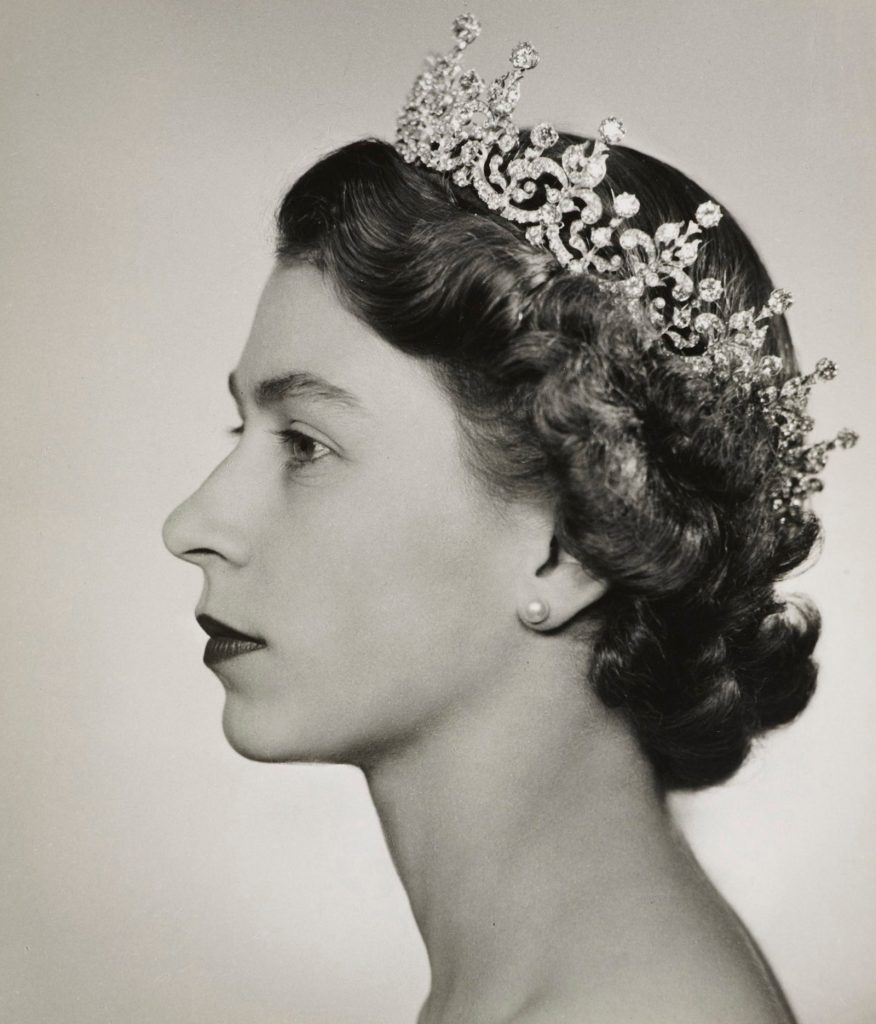
1/9 The Girls of Great Britain and Ireland Tiara
Held in trust by the monarchy for the nation, the crown jewels are, quite literally, priceless. Steeped in immeasurable historic, symbolic and cultural value, these jewellery pieces and gemstones are arguably the United Kingdom’s most valued treasures. Today, they are kept by armed guards in the Tower of London.
St Edward’s Crown, used exclusively during the moment of crowning itself, was last used in 1953 for the coronation ceremony of HM Queen Elizabeth II. Made from solid gold and adorned with semi-precious stones, it is one of the most instantly recognisable of the crown jewels.
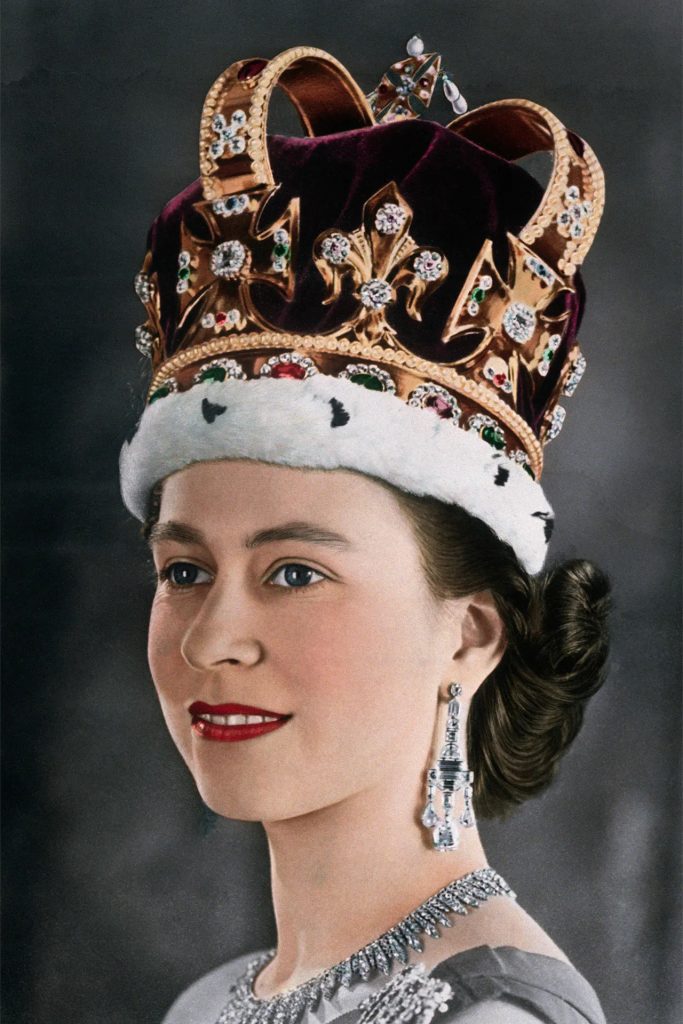
2/9 St Edward’s Crown
Following the coronation ceremony, the monarch exchanges St Edward’s Crown with The Imperial State Crown. Used for the annual State Opening of Parliament and other formal occasions, the Imperial State Crown features some of the most famous jewels of the collection, including the second largest diamond in the world, Cullinan II. Complementing the mammoth stone are 2,868 brilliantly cut diamonds, 269 pearls, 17 sapphires and 11 emeralds.
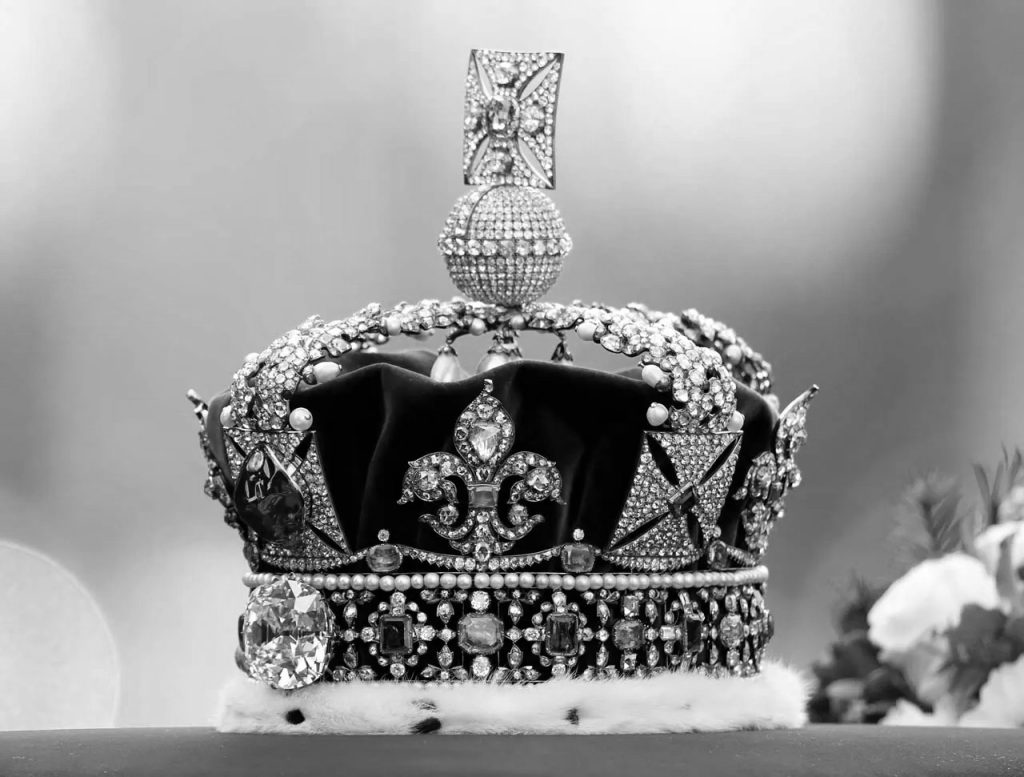
3/9 The Imperial State Crown
The largest colourless cut diamond in the world, the Cullinan I, is set in the Sovereign’s Sceptre cross. Used in every coronation since its creation in 1661, the Sovereign’s Sceptre was transformed when this truly exceptional 530.2 carat diamond was added by George V in 1910.
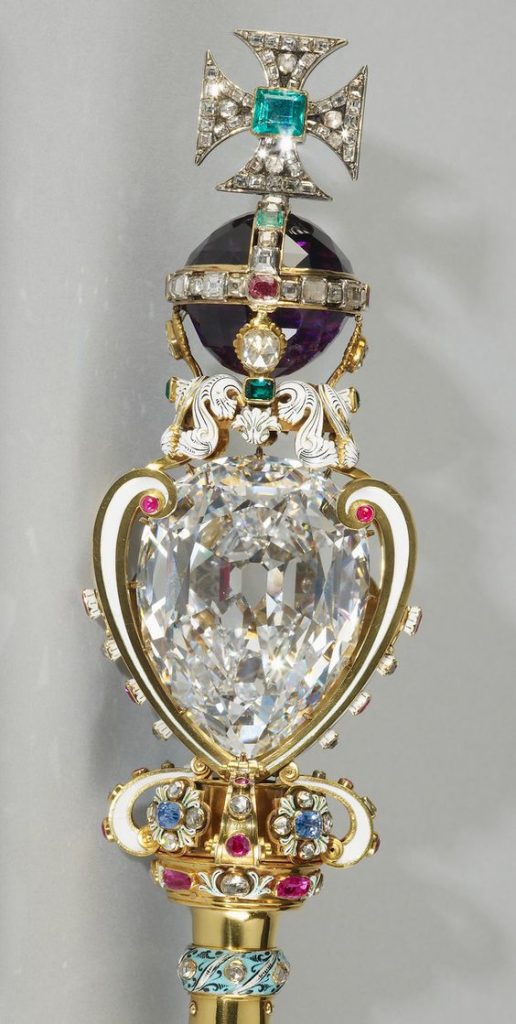
4/9 Sovereign Sceptre Cross
Featured in the crown jewels and currently trending as a point of ownership contention is the Koh-i-noor diamond. The history of the diamond dates back to the 12th century when it was originally mined at some point within a two-hundred year timeframe in India. Following the Queen’s death, demands have been made regarding its return to India due to its forceful removal during colonial times and the violent line of its path of ownership to the British royals. The governments of Iran, Pakistan and Afghanistan have also laid claim to the diamond.
While the crown jewels belong to the state, the late monarch’s personal style and individuality was illustrated through her own jewellery pieces. Many had either been inherited or gifted from countries and governments the world over, and when worn by the Queen, it was a considered gesture to each region. Her brooch selection particularly was also an expression of her subtle humour. Her jewellery choices during the Trump era coined the hashtag #broochwarfare. At her first meeting with President Donald Trump, she wore a small moss agate floral brooch from her collection which had been a gift from the Obamas – a move many saw as intentional. At a later function, she wore a ruby tiara and the internet was quick to jump on the theory that rubies are worn to ward off evil.
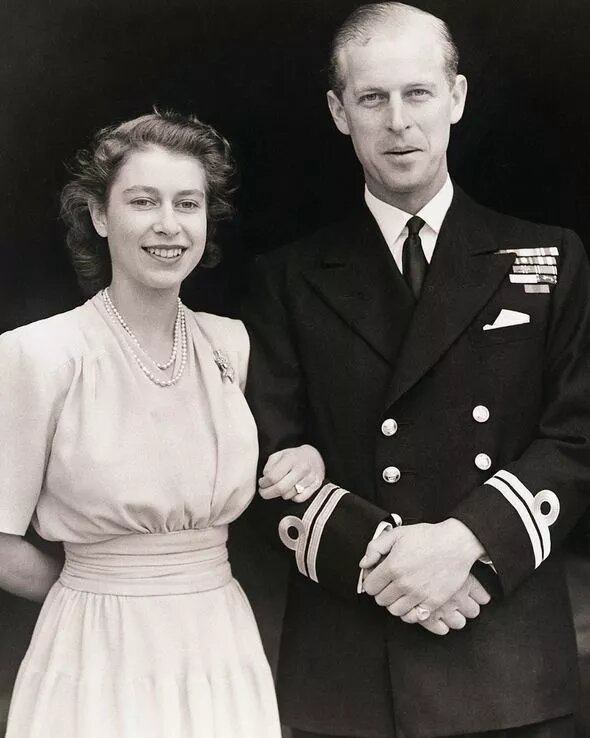
5/9 Clematis Brooch
Among the late monarch’s perennial brooch collection is perhaps the most sentimental – the Six Petal Diamond brooch. The Diamond Clematis brooch is rumoured to have been a gift from the palace employees and has been donned regularly by Her Majesty. It made its first notable appearance during her public engagement announcement to Prince Philip, and was worn many times by the Queen since.
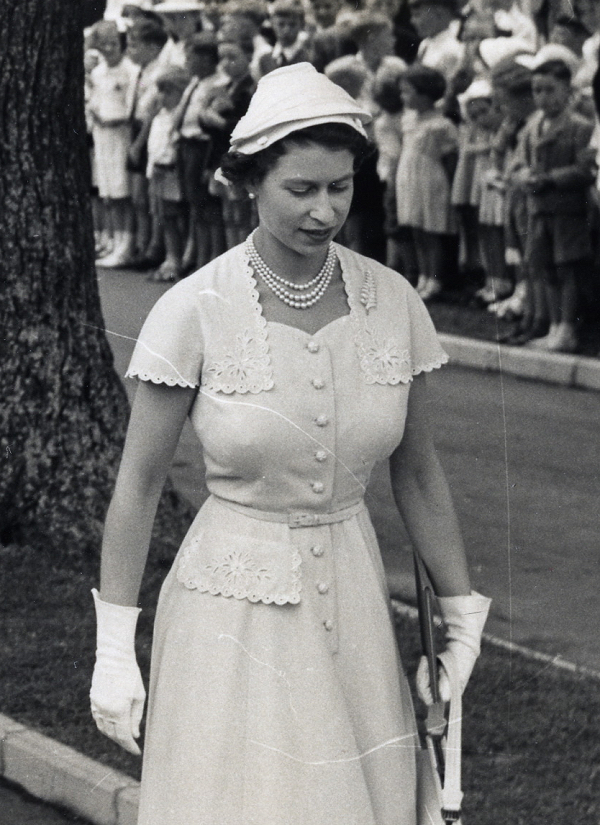
6/9 New Zealand Silver Fern Brooch. An important national emblem, the fern brooch features platinum and brilliant and baguette diamonds. Gifted on Christmas Day in 1953 by Lady Allum (wife of the Mayor of Auckland) on behalf of the women of Auckland.
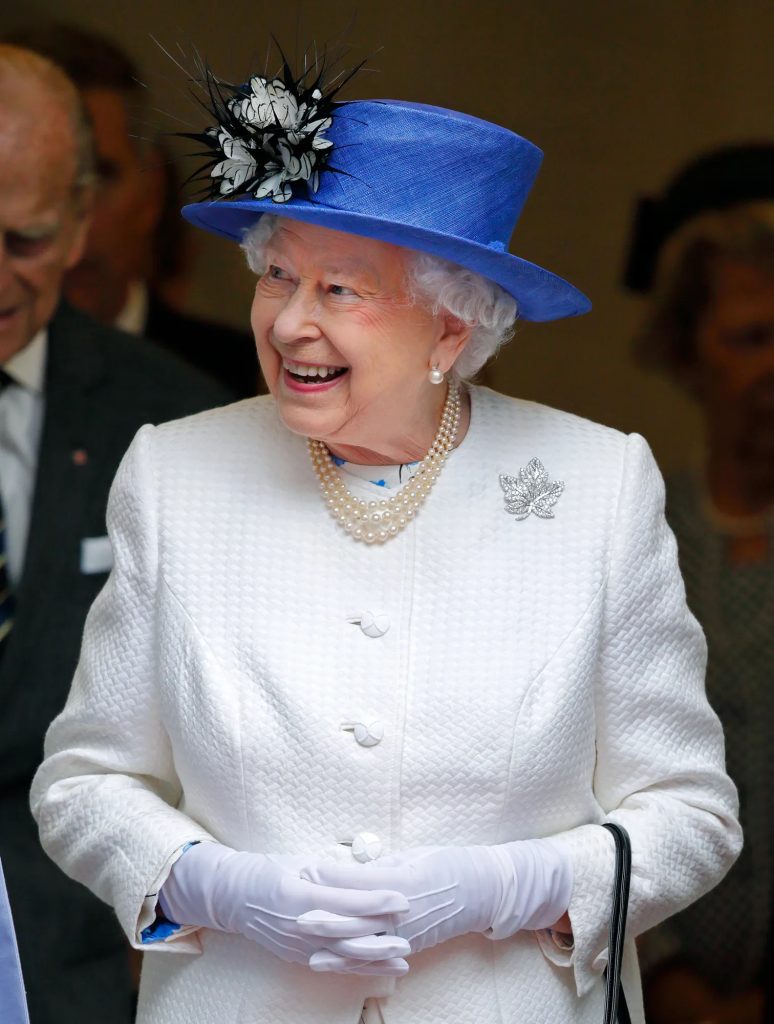
7/9 Canadian Maple Leaf Brooch. Made by Asprey and Company and featuring brilliant and baguette cut diamonds. Originally gifted to the Queen Mother by King George IV in 1939 during a state visit to Canada. It was inherited by the Queen in 2002 and was the first brooch she wore on her first trip to Canada.
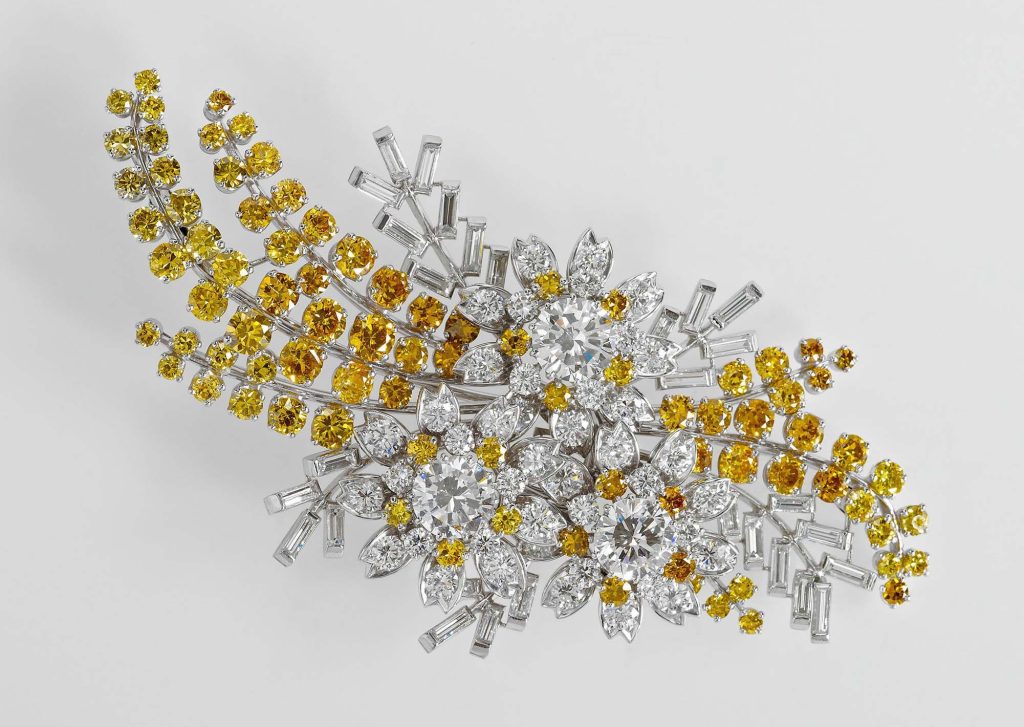
8/9 The Australian Wattle Brooch. Designed by Paul Schneller featuring white and yellow diamonds set in platinum and commissioned by William Drummond and Co. Gifted to the monarch by Australian Prime Minister Robert Menzies during her Commonwealth tour in 1954.
A reflection of timeless beauty and elegance, a favourite jewellery staple among the Queen’s collection are her pearls. The image of dignity and romance, pearl necklaces and earrings have so enduringly complimented the Queen’s outfits, they are clearly among the late monarch’s most treasured jewels. Included in her spectacular collection are the necklaces originally belonging to Queen Caroline and Queen Anne, which were a wedding gift to Queen Elizabeth II from her parents.
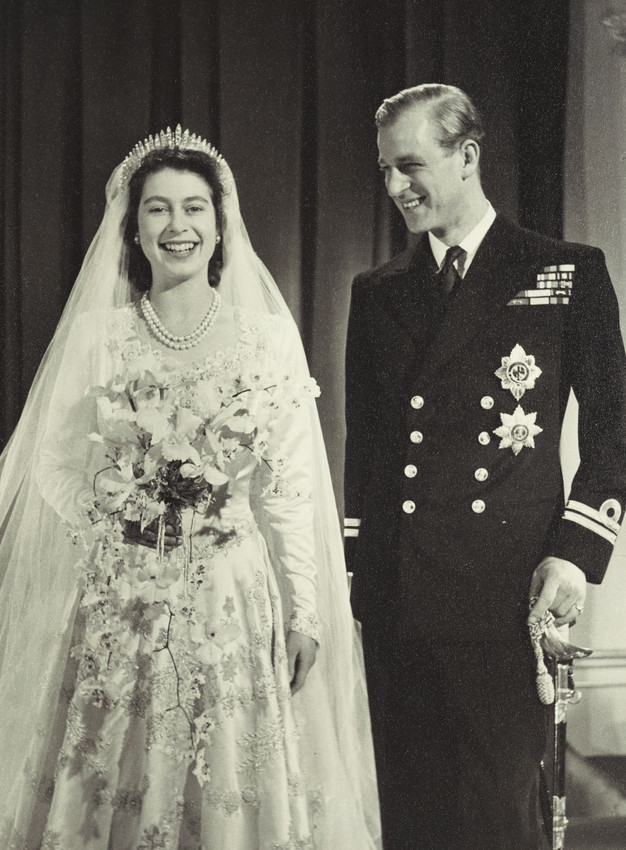
9/9 Queen Caroline and Queen Anne’s Pearl Necklace and Earrings
The most quintessential of Her Majesty’s treasures and a distinctive silhouette representing her regal position is the tiara. Perhaps the most famous, The Girls of Great Britain and Ireland Tiara, is recognisable as being featured on the official royal photograph on coins and banknotes.
The question of who will inherit her expansive jewellery collection depends on where it comes from. Crowns and ceremonial pieces form part of the Crown Jewels, which will remain on public display at the Tower of London. Not belonging to Queen Elizabeth II specifically, these items belong to the monarchy and are enjoyed by tourists the world over. The Royal Collection, which includes the Queen’s own private jewellery collection of inherited and purchased jewels, will likely be distributed amongst the royal family.
“It is likely that she would want to pass on items from her private collection to her loved ones,” royal commentator Josh Rom explained to the New York Post. “The bulk of the collection will pass to Charles — with Camilla as his Queen Consort — and then Kate, so they may not be left anything big [in the will].”
The Queen’s passing will be felt significantly in the jewellery world. Jewellery brands and fashion retailers paid their respects during the period of mourning in a variety of ways. Burberry cancelled their event at fashion week (other non essential events were cancelled by the British Fashion Council out of respect), Selfridges and Liberty closed their doors, while many others in the industry such as De Beers and Pandora offered kind words, recognising the Queen’s service and paying their respects publicly on Twitter.
HM Queen Elizabeth II lived a remarkable life of service. She will be remembered for many things, not least as a beacon of decorum and grace.
Read below for related stories: